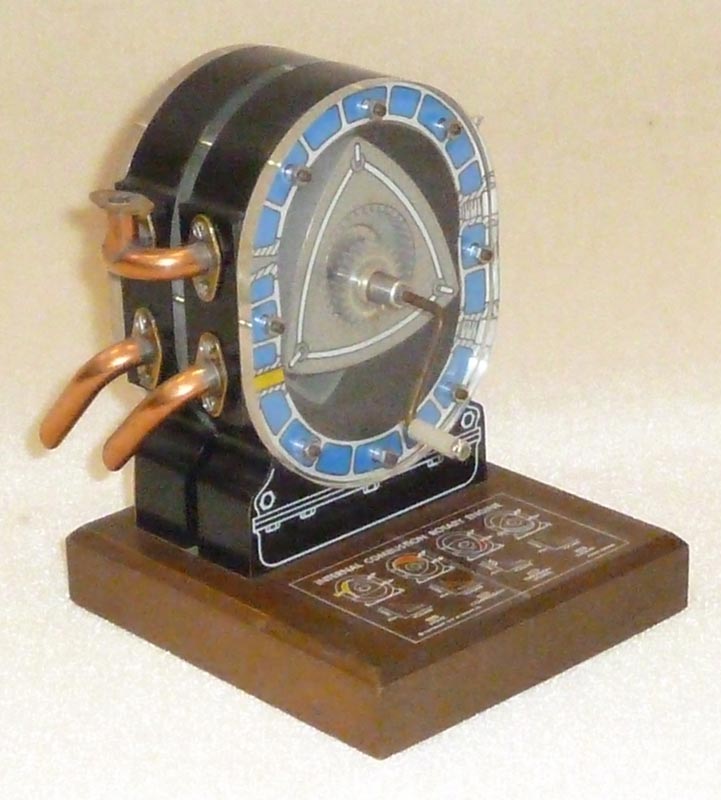The Wankel engine is a type of internal combustion engine using an eccentric rotary design to convert pressure into a rotating motion instead of using reciprocating pistons. Its four-stroke cycle takes place in a space between the inside of an oval-like epitrochoid-shaped housing and a rotor that is similar in shape to a Reuleaux triangle, but with sides that are somewhat flatter. The very compact Wankel engine delivers smooth high-rpm power. It is commonly called a rotary engine, though this name applies also to other completely different designs.
The engine concept was invented by German engineer Felix Wankel. He received his first patent for the engine in 1929, began development in the early 1950s at NSU, and completed a working prototype in 1957. NSU then licensed the concept to companies around the world, which have continued to improve the design.
This demonstration model was prepared by the Ingersoll Rand Corporation to give to potential customers for their big industrial engines that used a rotary design. This engine is a two-rotor design with one rotor behind the other. Viewers can see the unusual motion of the rotor by turning the crank. The engine has few moving parts and is smooth and powerful for its size, although low speed torque is not a strong point. Only Mazda still uses the engine design in a production car, the RX8 sports car.

